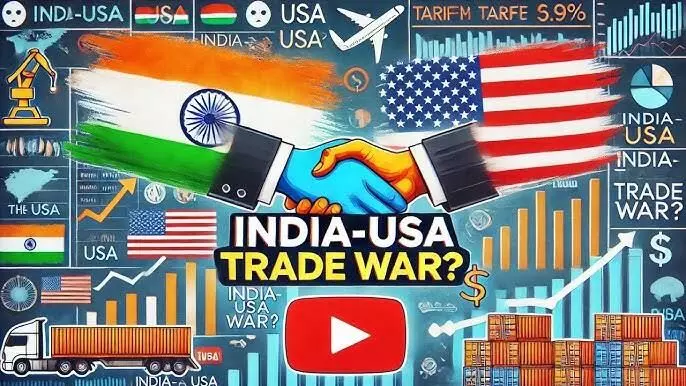India on Edge as U.S. Tariff Storm Brews: What If We’re Next?

As America turns up the heat on global trade, India could soon find itself in the line of fire. If Washington decides to slap tariffs on Indian exports, the economic impact would ripple across industries, jobs, and global alliances.
A Trade Tension That’s Spreading Fast
Over the past 48 hours, the United States has taken a bold and controversial step by issuing fresh tariff notifications to over a dozen countries. These new import duties, ranging from 25 to 40 percent, are set to kick in on August 1. President Donald Trump signed the executive order over the weekend, extending what was originally a 90-day suspension of tariff action.
Here’s what the new tariff structure looks like:
25 percent tariffs on imports from Japan, South Korea, Malaysia, Tunisia, and Kazakhstan
30 to 36 percent on goods from Indonesia, Cambodia, South Africa, Bosnia, and Thailand
A sharp 40 percent on products coming in from Laos and Myanmar
In addition, the White House has floated a new 10 percent penalty on countries it sees as too closely aligned with the BRICS economic bloc. This includes China, Russia, Brazil, South Africa, and potentially, India.
Commerce Secretary Howard Lutnick summed it up clearly at a press conference:
"We are prepared to take strong, targeted action against any nation that exploits American access while restricting our own. This is about fairness and accountability in a fractured global economy."
While India hasn’t been named directly yet, the signals are hard to ignore. The country’s growing role in BRICS, its recent economic statements promoting South-South cooperation, and ongoing disagreements with the U.S. on data localization and digital trade make it a potential target.
If India Gets Dragged In, What Would It Mean?
India’s export economy, valued at over 450 billion $, relies heavily on the United States. The U.S. is India’s single largest export market, accounting for nearly 18 percent of all outbound trade. Any significant hike in tariffs on Indian goods, especially in the 10 to 15 percent range, could lead to a domino effect:
Export-dependent industries like pharma, textiles, auto parts, and electronics would take an immediate hit
MSMEs, which form the backbone of Indian manufacturing, could face reduced orders and cash flow stress
The rupee could slide further due to uncertainty and a surge in dollar demand
Growth forecasts would likely be revised downward as external trade slows and investor sentiment sours.
A senior official from the Ministry of Commerce, speaking off the record, said, “We are closely watching how this unfolds. If the U.S. includes India in its tariff action, we are ready to defend our interests. That could include multilateral challenges at the WTO and firm bilateral conversations.”
Publicly, India’s position has been measured but resolute. “We believe in rules-based global trade. Any unilateral move that harms Indian interests will be met with a proportionate and strategic response,” External Affairs Minister S. Jaishankar said during a media briefing on Monday.
What India Might Do in Response
If the U.S. were to go ahead with tariffs on Indian products, there’s a good chance New Delhi will move quickly on several fronts:
1. Take the matter to the WTO and argue that the tariffs violate Most-Favoured-Nation obligations.
2. Consider imposing retaliatory tariffs on American goods, such as agricultural imports, tech hardware, and defense components
3. Step up efforts to build stronger trade partnerships with Europe, Africa, and Southeast Asia.
4. Push harder on domestic manufacturing under schemes like PLI to reduce dependence on volatile export markets.
But this isn’t just about trade numbers. If tariffs come into play, the diplomatic equation gets more complicated. India has been trying to maintain a delicate balance between its strategic closeness with the U.S. in forums like the Quad and its ideological commitments with BRICS and the Global South. A tariff offensive from Washington could force New Delhi to recalibrate its position.
